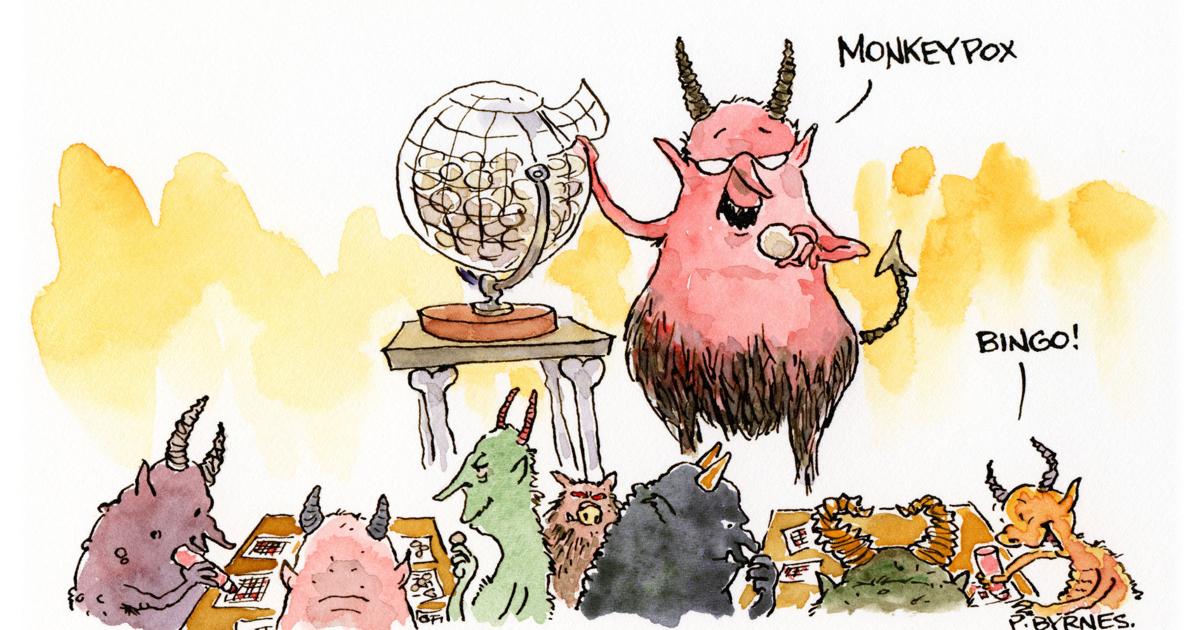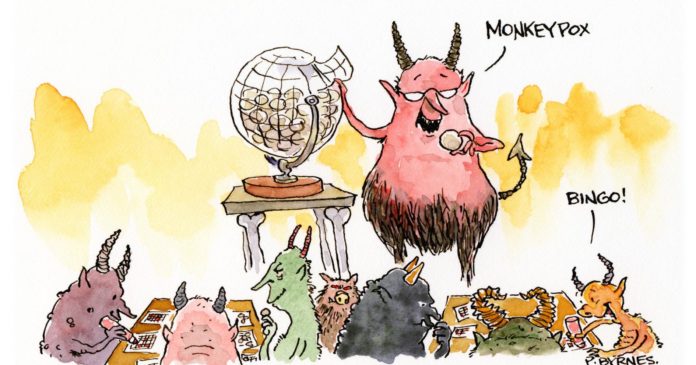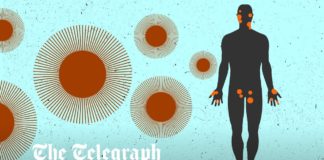
As if we didn’t have enough contagious viruses to worry about, monkeypox is now the latest unwelcome term to enter our daily lexicon.
Even before we learned about the first U.S. cases of the disease in May, the way the European outbreak was framed by the media and public health officials was eerily familiar.
Headlines and stories described monkeypox as something that primarily affected gay men — or men who have sex with men — due to the initial outbreak appearing largely in those communities in Europe and the U.S.
The initial wave of reporting from Britain focused on “gay bars, saunas and Grindr,” and all the pictures of monkeypox lesions appeared on people with darker complexions. In response, the UNAIDS agency issued a statement expressing its concern that some media coverage used racist and homophobic language, which was stigmatizing and could jeopardize public health.
People are also reading…
We have been here before, and if we want to avoid the mistakes of the past, we must learn from history.
More than 40 years ago, a disease The New York Times famously called a “gay cancer” began to appear in U.S. cities. Public concern (and the correlating scientific research and public health support) was dampened by the perception that the disease only affected gay men — already a minority group marginalized by homophobia. The first name for the disease was GRID, or Gay-Related Immune Deficiency, and in the early 1980s, the CDC even released guidance describing the disease’s “Four H” risk factors: “homosexuals, heroin users, hemophiliacs, and Haitians.”
Fear and stigma — not science and understanding — led to underreporting, blame and shame of people with HIV and undoubtedly made the epidemic worse.
To date, more than 700,000 people have died from HIV-related illness in the U.S. — of all sexual orientations, genders and races — and there are still 35,000 new infections a year. In the U.S., African American people face the highest burden of cases, due to lack of access to quality health care overall, discrimination and other socioeconomic factors.
Yet four decades later, as a far less deadly but nevertheless painful, debilitating and frightening virus has begun to spread, have we learned from our mistakes?
Stephaun Wallace, of the Fred Hutchinson Cancer Center and the University of Washington, who holds a doctorate in public health epidemiology, said it seems in many ways we have not.
“What we understand from the epidemiology and the biology of viruses in general is that they’re not unique to any particular social group. But that isn’t the way that messaging is coming out to the general community,” he said. For many people, Wallace said, it’s coming across that “only gay men can get monkeypox.”
Wallace, who works on vaccines, infectious disease, HIV and AIDS and LGBTQ+ health, among other areas, said this misperception could lead to the rest of the public believing it is not at risk, which could exacerbate cases locally in Seattle and King County as well as nationally.
If people think they aren’t at risk for a disease, they are less likely to learn about it and take measures to prevent it.
And while the early outbreaks of monkeypox in the U.S. and Europe have appeared in communities of men who have sex with men, that has not been the case in previous outbreaks in other parts of the world and there is no reason to think the virus will not spread outside of those groups.
Part of the reason the disease is likely to spread is that monkeypox is transmitted through skin contact — both through sexual contact and through social contact. That can include direct contact with scabs or lesions and other body fluids as well as hugging and contact with clothing that has been exposed to monkeypox, according to a fact sheet from the CDC.
The monkeypox outbreak has created a difficult balancing act for public health and community advocates. How do you ensure the communities that are currently most impacted urgently get reliable, clear information from trusted messengers — as well as the testing, vaccines and treatments they need — while still raising awareness and preventing complacency in the community at large?
In an article titled “Monkeypox is Not a Gay Disease,” authors Boghuma Kabisen Titanji and Keletso Makofane, who hold doctorates, write: “The focus must be on characterizing determinants of infections without judgment, providing support and guidance to the public without stoking fear, and grounding the response in empathy.”
We are now a couple of months past the first cases showing up in the U.S. As with the coronavirus pandemic, affected communities have raised alarms that testing is too limited, vaccines too scarce and information too spotty. Last week in New York City, for example, the monkeypox vaccine appointment website crashed due to high demand.
In King County, as of July 7 there were nine cases of the disease, and Public Health — Seattle & King County said there would be about 800 vaccine doses coming initially.
As we are in the early days of the outbreak here, Wallace said we have an opportunity to ask ourselves, public health leaders and elected officials what more we can be doing. In addition to case monitoring, testing and vaccine access, we need to talk about our messaging as well, he said.
“I think we need to really take a collective pause here on how we’re communicating this and really think about this from an equity lens — as well as the anti-stigma lens — to ensure that we’re not perpetuating the same sorts of stigmas that we saw with the early HIV epidemic,” Wallace said.








